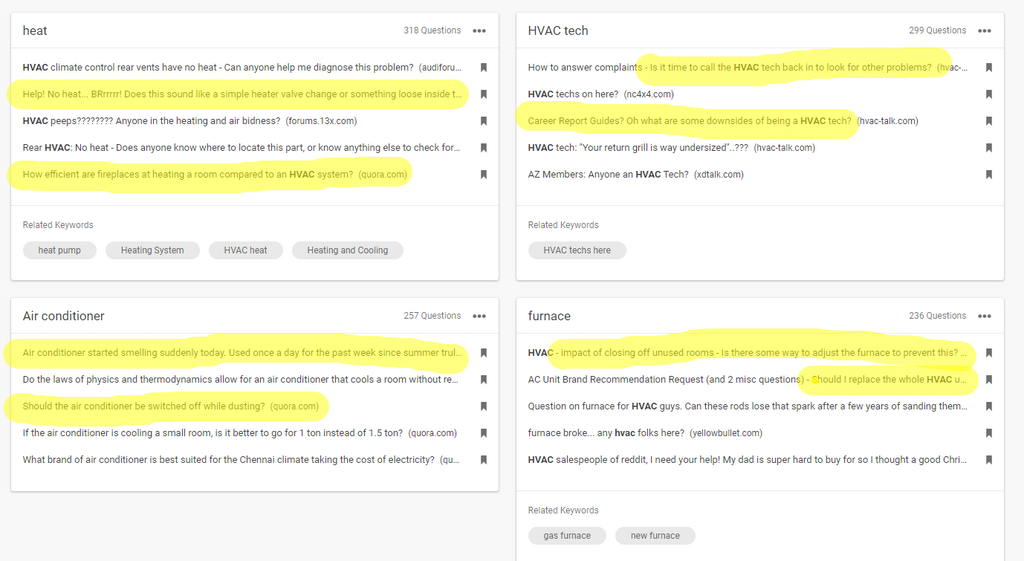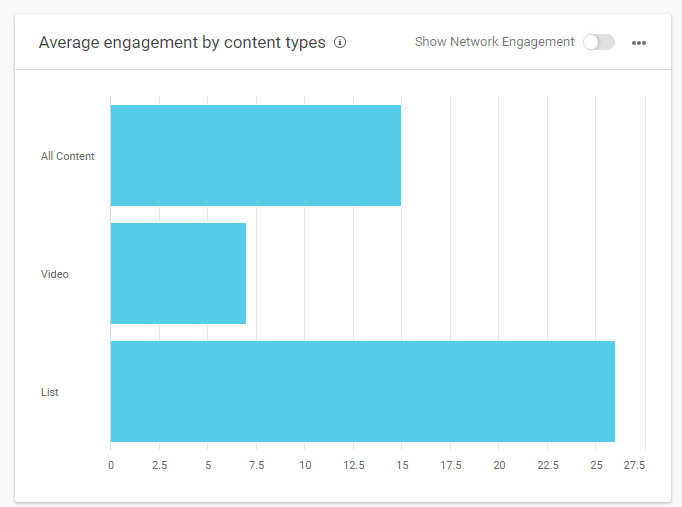Back in 2013, outlets published articles suggesting content marketing could overtake SEO as a dominant digital marketing strategy for boosting traffic and leads.
But are content marketing and SEO really two separate disciplines or do they work in harmony?
The answer to both questions is yes.
Content marketing and SEO are distinct but they each feed off each other to drive website traffic and visibility.
What is Search Engine Optimization (SEO)?
Moz describes search engine optimization (SEO) as:
“…the practice of increasing the quantity and quality of traffic to your website through organic search engine results.”
In other words, you use SEO to increase the number of visitors from your target audience to your website without paid methods.
Every time someone types a query into Google, the search engine algorithms and bots scan billions of websites to provide the most relevant results.
What Influences SEO?
Now for the ultimate question: What factors do Google’s bots look at to determine a website’s ranking in the results?
The truth is, no one knows for sure. Google keeps their algorithms as tightly guarded as nuclear codes.
While we don’t know all the details, we do know a few factors that impact search engine rankings with complete certainty:
Keep in mind that the percentages in the chart above aren’t set in stone. Google updates its algorithms daily. Plus, every query, searcher’s history, and website are all completely unique.
What are the Different Types of SEO?
Experts agree on three distinct types of SEO:
- Technical: Website speed, indexing, sitemaps, UX, structured markup, accessibility, mobile friendliness, etc.
- On-site: Accuracy, authority, age, keyword optimization, titles, headings, quality, etc.
- Off-site: Backlinks and social media (to an extent)
As you can see, there’s no winning formula for SEO. Sure, you can pay an expert to get the technical SEO details squared away. However, it takes time and consistency to build trust, authority, backlinks, and other qualities high-ranking websites have in common.
To discuss content marketing and SEO, you’ll want to pay special attention to that second type of SEO: on-site search engine optimization.
What is Content Marketing?
Content marketing is a popular form of inbound marketing. As the Content Marketing Institute describes it:
“Content marketing is a strategic marketing approach focused on creating and distributing valuable, relevant, and consistent content to attract and retain a clearly defined audience — and, ultimately, to drive profitable customer action.”
There you have it. Content marketing is all about using different media formats to provide relevant and valuable content to specific audiences on a consistent schedule. Such as:
- Blog posts
- Videos
- Podcasts
- Infographics
- Social media posts
- eBooks
- Case studies
- Memes
- Testimonials and reviews
- User-generated content
There aren’t exactly different types of content marketing but rather different types of content.
What is a Content Marketing Strategy?
Each organization’s content marketing will look completely different – even compared to its competition.
That’s called a content marketing strategy. A content marketing strategy is how you’ll use different types of content to:
- Reach specific audience segments
- Drive website traffic
- Earn trust
- Gain visibility
- Generate leads
- Convert sales
Why You Can’t Separate Content Marketing and SEO
The goals of content marketing overlap with the demands of SEO. That’s why you can’t separate content marketing and SEO.
If you want to show Google’s algorithms that you’re an authority worthy of ranking on the first page of several search engine queries, you have to give the Google bots some material to scan.
They must spend time learning about you.
Without content marketing, SEO is like showing up to an open mic night without any planned music or comedy skits. On Google, you can’t be a part of the conversation if you don’t have any material to share.
On the flip side, content marketing without SEO is like standing on an empty street corner to pass out newspapers. SEO is the vehicle you use to get your content in front of the right sets of eyes. Without SEO, no one will consume – or even see – your content.
How to Build a Content Marketing and SEO Strategy
Sure, you could fight over the technical details of Google’s algorithm and how it chooses what shows up in the search results – but that’s really a moot point.
At the end of the day, Google’s job is to answer people’s questions. Your content marketing and SEO strategy should go hand-in-hand to achieve that goal.
Here are a few basic tips for building a content marketing and SEO strategy centered on long-term success.
Know Your Audience
You can’t create relevant and valuable content if you don’t know who your audience is and what they want to learn. Your goal is to answer their questions.
BuzzSumo’s tools can help you research specific topics to see what kind of questions people are already asking. By plugging “HVAC” into the Question Analyzer, you get endless ideas to build content:
Choose the Right Keywords
To show Google and searchers what your content is about, you’ll need to choose the right keywords and strategically place them throughout each piece of content.
By typing “HVAC” into the BuzzSumo keyword research tool, you get thousands of related keyword ideas for building your content strategy:
Create Amazing Content
Those links that show up on the first page of Google aren’t there by chance. They have a few things in common. Well-ranking content is:
- Long-form: Usually between 2,000 and 3,000 words
- Well-researched: Includes plenty of outbound sources to authoritative websites.
- Current: The content is relevant, accurate, and contains current stats/facts.
BuzzSumo’s Content Analyzer lets you see what the most-shared content for each topic has in common. Here are some of the results for an article about air conditioner tips:
And for other ways to optimize your content on the go, check out our list of 30+ marketing and SEO chrome extensions that marketers are actually using here.
Start Learning About Your Audience with BuzzSumo
BuzzSumo can help with every aspect of content marketing and SEO – from keyword research and topic planning down to social media and amplification.
Use BuzzSumo’s keyword research tool to drive your content marketing and SEO strategy.
The Monthly Buzz⚡
Subscribe to BuzzSumo's monthly newsletter to:
Stay up-to-date with the best of the best in content marketing 📝
Get data-informed content, tips and tidbits insights first 👩🏻💻
Read top shared content by top marketing geeks 🤓
Try
Enter any topic, term or url to search to see BuzzSumo in action. It’s free!
100% free. No credit card required.





